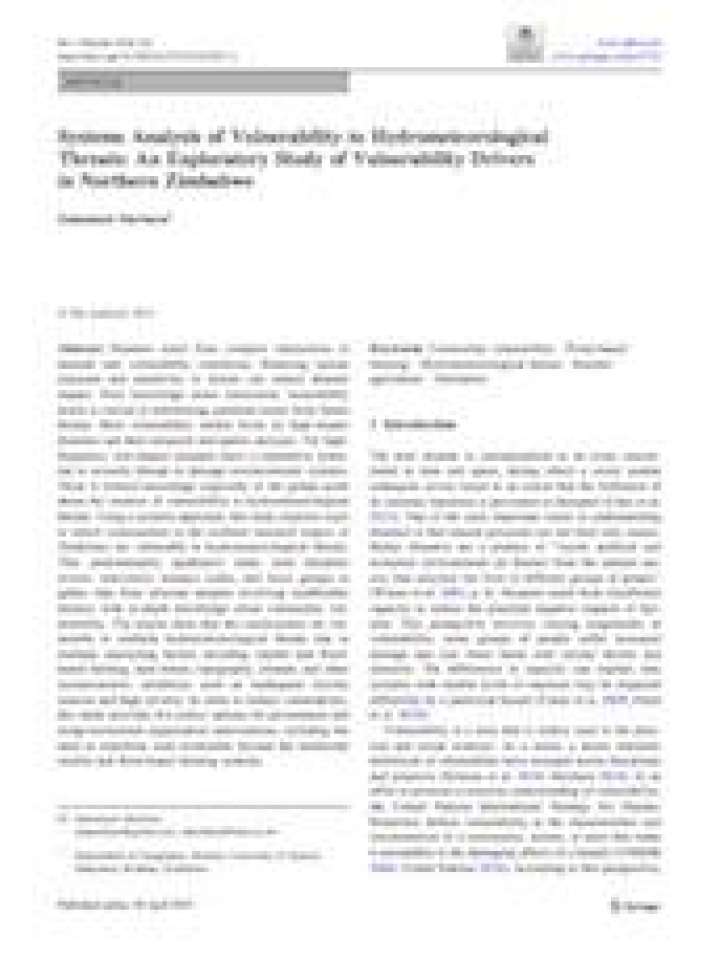Systems analysis of vulnerability to hydrometeorological threats: An exploratory study of vulnerability drivers in Northern Zimbabwe
Most vulnerability studies focus on high-impact disasters and their temporal and spatial analyses. Yet high-frequency, low-impact disasters have a cumulative potential to severely disrupt or damage socioeconomic systems. There is limited knowledge especially in the global south about the creation of vulnerability to hydrometeorological threats. Using a systems approach, this study explores ways in which communities in the northern semiarid tropics of Zimbabwe are vulnerable to hydrometeorological threats. This predominantly qualitative study used literature review, interviews, transect walks, and focus groups to gather data from selected samples involving smallholder farmers with in-depth knowledge about community vulnerability.
The results show that the communities are vulnerable to multiple hydrometeorological threats due to multiple interacting factors including rainfed and flood-based farming, land tenure, topography, climate, and other socioeconomic conditions such as inadequate income sources and high poverty. In order to reduce vulnerability, this study provides five policy options for government and nongovernmental organization interventions, including the need to transform rural economies beyond the traditional rainfed and flood-based farming systems.
Explore further

